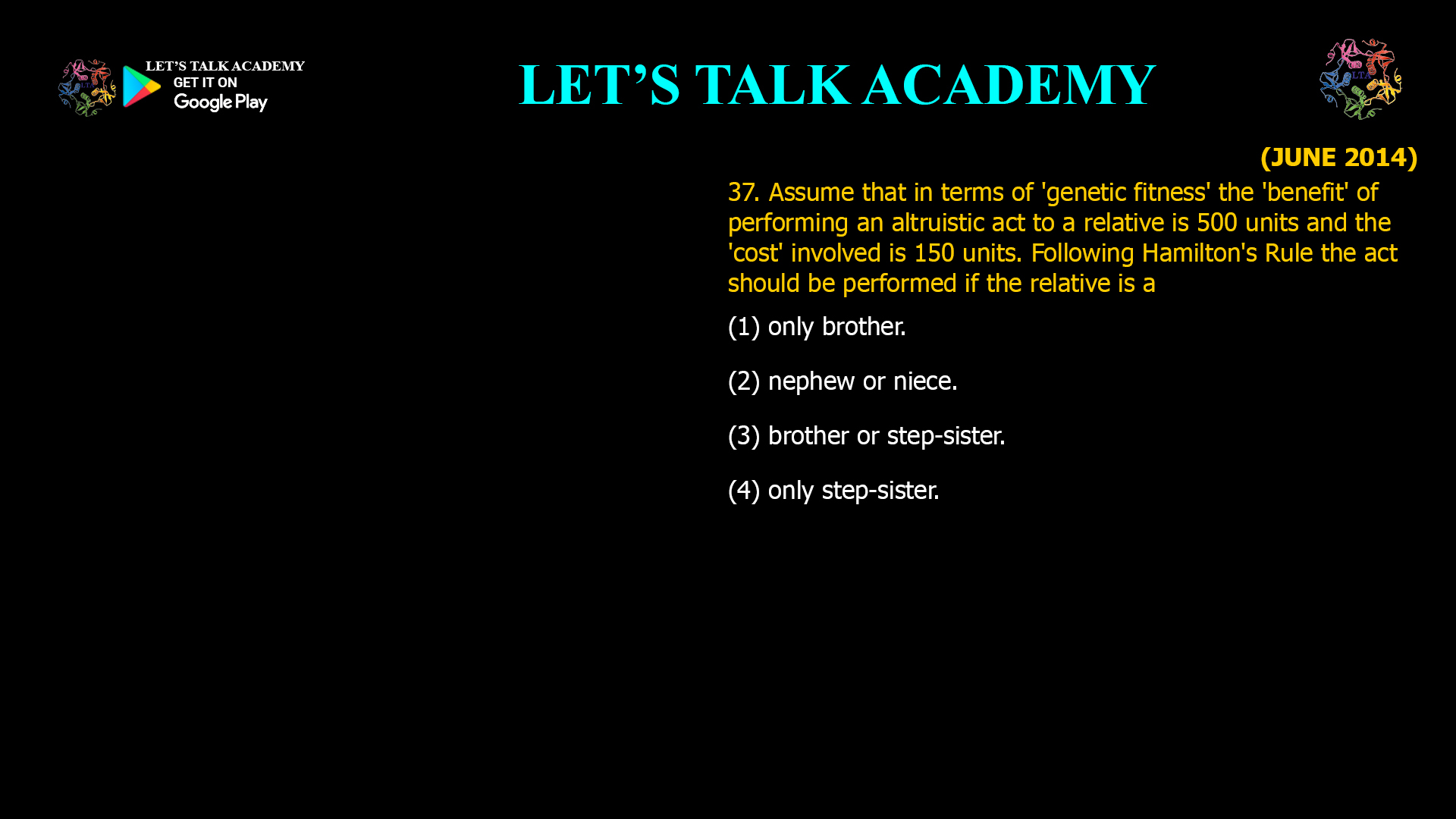- Assume that in terms of ‘genetic fitness’ the ‘benefit’ of performing an altruistic act to a
relative is 500 units and the ‘cost’ involved is 150 units. Following Hamilton’s Rule the act should be performed if the relative is a
(1) only brother. (2) nephew or niece.
(3) brother or step-sister. (4) only step-sister.Step-by-Step Calculation Using Hamilton’s Rule
-
Set up the inequality:
r×500>150r>150500=0.3
-
Interpret the result:
A should help B only if their genetic relatedness is greater than 0.3.
Genetic Relatedness Values
-
Brother or Sister: r = 0.5
-
Nephew or Niece: r = 0.25
-
Step-sister: r = 0 (no genetic relation)
-
Cousin: r = 0.125
These values are well-established in genetics and evolutionary biology.
Applying the Rule to the Options
Relationship Relatedness (r) Meets r > 0.3? Brother or Sister 0.5 Yes Nephew or Niece 0.25 No Brother or Step-sister 0.5 and 0 Only brother Only Step-sister 0 No -
Brother or Sister: r = 0.5 > 0.3 → A should help
-
Nephew or Niece: r = 0.25 < 0.3 → A should not help
-
Brother or Step-sister: Only the brother qualifies (r = 0.5)
-
Only Step-sister: r = 0
Conclusion
According to Hamilton’s rule, Individual A should help Individual B only if B is his brother or sister, because only this relationship meets the threshold of genetic relatedness required for the altruistic act to be favored by natural selection.
Correct answer: (1) only brother.
-




1 Comment
Kajal
October 15, 2025Only brother